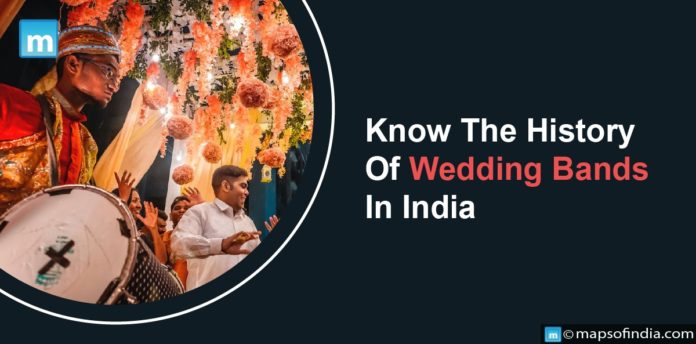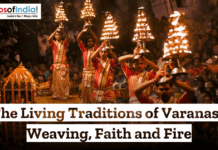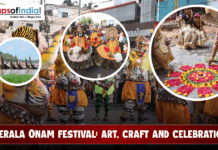Wedding bands, commonly known as ‘baja’ in India, are an active and important element of Indian weddings. Their upbeat and upbeat music sets the tone for the festivities and contributes to the overall delight of the occasion. Wedding bands have a long history in India, with a rich and diversified culture that has evolved.
Early Origins
The initial mention of wedding bands in India can be found in ancient scriptures. One of the oldest Hindu books, the Rigveda, recounts using drums, flutes, and other instruments during wedding celebrations. These instruments were thought to ward off evil spirits and bless the marriage. Later decades saw the introduction of new instruments and musical styles into Indian wedding music due to the influence of diverse cultures such as the Mughals and the British. The shehnai, a double-reed woodwind instrument, became famous for bridal processions, while the dhol, a huge drum, provided a rhythmic rhythm to the festivities.
The Rise of Brass Bands
Brass bands gained prominence in India during the 19th century. This trend was mainly attributed to the influence of British colonial rule. British military bands frequently performed at public gatherings, and their upbeat music immediately became popular with Indians. The brass band format was taken by Indian musicians and adapted into their musical traditions. They began incorporating Western instruments such as trumpets, clarinets, and saxophones into their repertoire, alongside traditional Indian instruments such as the dhol and shehnai. This blending of traditions produced a distinct and energizing sound that became synonymous with Indian wedding music.
The Modern Era
Throughout the twentieth century, Indian wedding music evolved, embracing aspects of popular music, film music, and even international genres like jazz and rock. Wedding bands have evolved into more sophisticated, professional entities with specific training and equipment. Indian wedding bands have become a broad and lively force in the Indian music landscape. From ancient folk music to contemporary Bollywood tunes, they appeal to various tastes and inclinations. Their music is an essential element of the Indian wedding experience, helping to create a lively and memorable mood for the couple and their guests.
Regional Variances
Different regions of India have their wedding band traditions, reflecting the country’s vast cultural diversity. The Baja bands of the northern regions, particularly Punjab, are distinguished by the dhol’s vigorous beats and the shehnai’s high-pitched melodies. Traditional instruments such as the nadaswaram and thavil take a significant role in the southern states, producing a distinct musical landscape. The blending of regional cultures has resulted in a mix of sounds that may be heard nationwide during wedding celebrations.
The wedding band industry in India has witnessed tremendous change in recent decades. Once informal and local affairs, wedding bands have become professionalized, with dedicated musicians and specialized services. Furthermore, the globalization of Indian weddings has introduced worldwide influences, resulting in collaborations between traditional wedding bands and performers from many musical genres. Wedding bands have grown in unison with the shifting panorama of Indian society, from the humble origins of traditional ensembles to the dynamic and professionalized sector we see today. The resonant beats of the wedding band serve as a musical reminder of the blissful union of two souls, echoing down the halls of time as couples continue on their journey of matrimony.




